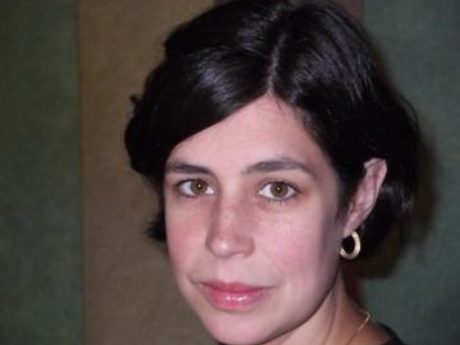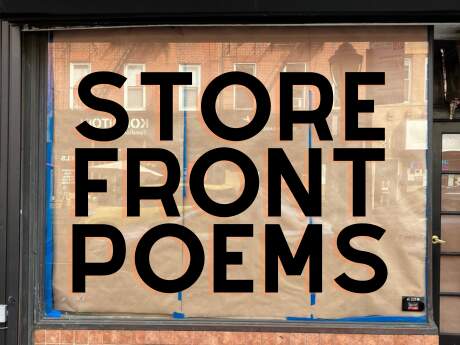In Their Own Words
Lizzie Hutton's “Northern Baroque”

Northern Baroque
The tulips, the unnatural purple ones
my husband gave me: it's been a week
that they've remained
balanced on their stems,
their feathering petals
upright and closed, as if wired
at a few choice points.
So it's hard to tell
if they're still alive at all, their slim
lit leaves
all sculpturally flexing
and the way that one
has accidentally knifed—it's how they settled
in the vase—
into its own bloom's
insubstantial tent
so that it brings exposed
its own dimmed organ,
beautifully
unspeaking, cool and
sexually resistant.
Yet also, just beyond this,
from our front yard's snow-lined maple,
a crow lets drop, like a fat
torpedo, his own body.
Poem is reprinted from She'd Waited Millennia (New Issues, 2011) with the permission of the author.
On "Northern Baroque"
A poem for me never feels right—"taut on the page," someone put it—until I fully understand what in the poem is at stake. This is as true when I read as when I write. And by "at stake" I'm not talking about how the poem resolves, or what it "means"—that I never really know. I'm talking instead about a felt presence, a tension, a "tautness" that occurs only when the various pieces that make up the poem come into a kind of focus and balance with each other, be they images, tonal elements, explicit ideas or whatever.
"Northern Baroque" emerged out of my thinking about visual art, and wondering how certain highly formal still lifes achieve their potency, their sense of urgency and intimacy. I also actually did have a vase of flowers before me when I wrote the first draft, and I couldn't tell if the flowers were dead or alive—but there they were, nonetheless, upright. I wasn't at the time conscious of the way this poem's elements can be seen as representing certain very personal emotional states, stasis and action, etc. When I composed the poem, and worked on it (over a few years, probably; it takes me a long time to coax that tautness into being), my focus was on the poem's concrete elements, the flowers and the crow—not what they might represent, but what they actually were, and, more importantly, how I might present them—as in a still life—in particular relation to each other.
Not all poetry is like a still life, and this poem is in some ways unusual for me—my work is usually a bit more chatty, more explicitly searching, more willing to draw conclusions, if provisionally. But here I wanted to experiment with the "tautness" I referred to above as an actual structural model. Early drafts of the poem hinted at how I might achieve this tension without snapping the wire, mostly through little tonal shifts and syntax. To me, the poem itself is Baroque—what is at stake, for me, is how an elaborate kind of restraint stands in relation to the recklessness of the last two lines.

